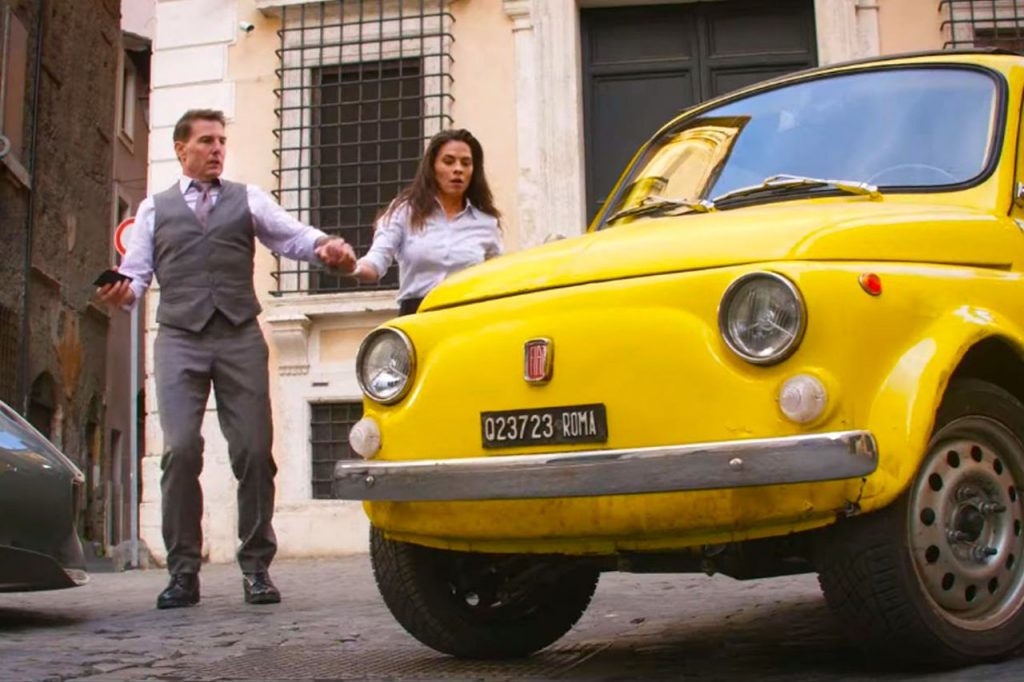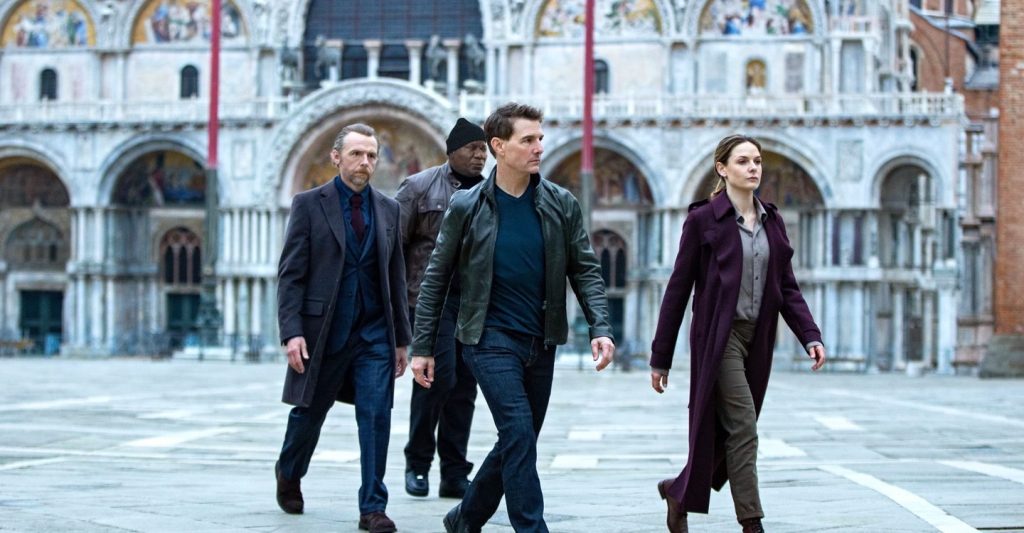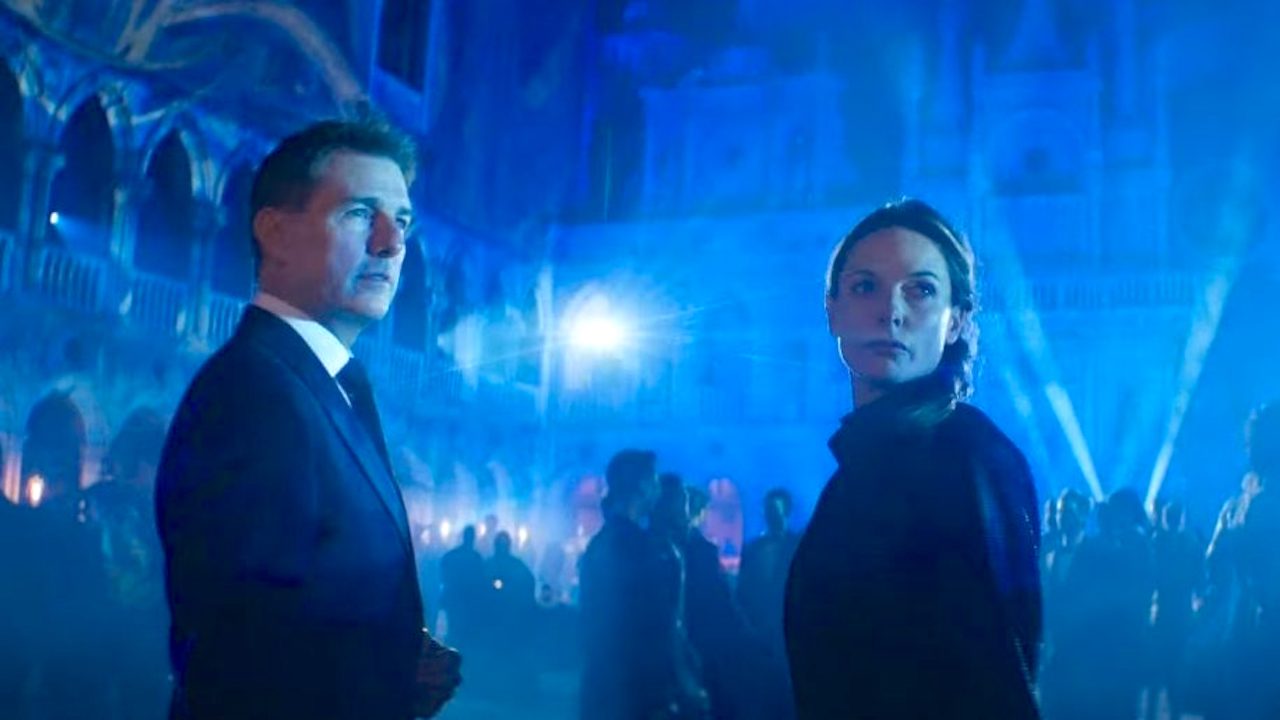- Erik Jendresen Talks Mission Impossible 7 – Dead Reckoning (Part 1)
- Erik Jendresen Talks Mission Impossible 7 – Dead Reckoning (Part 2)
Is Mission Impossible – Dead Reckoning An Action Film?
Ostensibly, it is. “But with this specific one, I’m looking at horror tropes such as fear of the unknown, and the science fiction tropes about technology – how is something today going to affect us the day after tomorrow?”
The villain – aka “The Entity” is a timely boogeyman in Dead Reckoning. “We’ve been quite blessed to be smack dab in the geographic center of the bullseye in terms of the zeitgeist right now. This genie that’s out of the bottle, this pandora’s box,” continues Jendresen.
“The challenge was characterizing and finding a way of articulating that fear cinematically… bringing home the abstract nature of this thing, of this fear of fake news and truth vanishing and not being able to rely on even the experience of your own senses.”
“When that is left to run rampant as a force in our experience to grow and to lose all agency because we don’t know what’s real and what’s not is the stuff of great storytelling, I think. It’s truly terrifying,” Jendresen exclaims.
McQuarrie and Jendresen know they had a villain we haven’t seen on screen before. Despite the new villain, the principles of villainy remain the same. “How do you make those stakes more universal, more tangible, more terrifying and relevant?”
These are the horror aspects of Dead Reckoning – the dread of an imminent threat. They need to understand it before they can stop it, or at least limit its damage.

Ethan Hunt (Tom Cruise) & Grace (Haley Atwell) Photo courtesy of Paramount Pictures.
Jendresen contends that Dead Reckoning isn’t science fiction – it’s “science fact.” Or possibly, “science friction.” “We’re dealing with extrapolating just a little bit. In Ray Kurzweil’s world, the singularity of the threat is right around the corner.” It raises the question of whether all of humanity’s inventions are to its benefit.
“I think what we’re talking about here elliptically is the exact intersection between science fiction and horror. There’s a little bit of Jules Verne and a lot of H.P. Lovecraft, and George Orwell in there too.”
How Much Exposition?
A key aspect of any mission is to divulge information to both the characters and the audience. It’s vital information that needs to be delivered in one lump sum to enable viewers to follow the story. The big exposition dumps are:
- defining the mission,
- defining the threat,
- defining the action,
- redefining the latter when the threat was underestimated.
The right exposition needs to be dispatched in the right amount at the right time. Over or under- balancing can pull the audience out of the story. Sometimes, you can’t break it up into smaller, digestible chunks and it needs to be an efficient information dump.
“There are two things that we love, which is exposition about an idea or something that nobody’s ever thought of, and nobody understands, so de facto it has to be explained,” continues Jendresen.
Defining The Entity isn’t a matter of one character informing the other. In this case, everyone is trying to fathom what this thing is and what it might do. The exposition is evolving between them. And, as additional information comes along, the team needs to constantly revisit it.
Erik Jendresen and Chris McQuarrie reserve the term “information dump” for the type of information that might come from planning a heist. “Here’s the plan. This is what we’re going to do. And of course, it never works out quite that way.” Some exposition can simply be delivered as it happens. Erik cites the example of Grace (Hayley Atwell) trying on the mask in the train and her face transforms to that of villain, Alanna Mitsopoulos (Vanessa Kirby). It doesn’t need to be pre-explained. The audience can see it in real time.
Breathing Space
Both the audience and characters alike need occasional respite to calm themselves, process, recalibrate, rebalance, and recenter between the eye-popping action sequences.
Jendresen doesn’t plan these quiet moments in the script. They’re intuitive. “We are creating these things on the run. Maybe up to seventy percent of the shooting script will change from moment to moment, so it’s difficult to plan for these softer moments.”
Needless to say, that there aren’t too many index cards or white boards in the writing process. There is a main story spine, but there are so many instances of scenes being amplified and improved just before shooting. Jendresen concedes there was a time when there was simultaneous inter-continental shooting and they had no margin for improv or impromptu scenes. Laments the screenwriter, “We actually had to commit it to a whiteboard. It was exhausting and confounding to the two of us because we never worked that way. But we were forced to because we only had seven days to shoot that sequence.”

Benji Dunn (Simon Pegg), Luther Stickell (Ving Rhames), Ethan Hunt (Tom Cruise) & Ilsa Faust (Rebecca Ferguson). Photo courtesy of Paramount Pictures
McQuarrie also casts his Mission Impossible films to allow the characters to bring their nuances to them. “He will frequently cast somebody in a role, and we really don’t know who the character is, but we’re both paying acute attention to what the actor is bringing to this character naturally, and then sometimes completely rediscover who the character is based on what that particular actor wants to explore and wants to bring to them.”
Haley Atwell is a case in point and the screenwriters discovered her character together. “That brings a certain immediacy, a liveliness, and a reality to the performance in this franchise that is also unusual.”
Despite the highly-polished end result, the seemingly chaotic filmmaking process works. Erik also mentions the significance of their editor. “There’s Eddie Hamilton and Chris McQuarrie in an editing room together, which you have to experience. It’s extraordinary how they work together as a collaborative team and how something that could be incredibly precious to all of us, then have to go to a different way. We got have to shoot a new scene or shoot some pickups and we’re going to leave stuff we already have on the floor because it doesn’t it doesn’t serve the story.”
Final Words
The fluidity of writing Mission Impossible movies tests Jendresen’s writing process. “It is antithetical to the way I approach screenwriting. It was such a joy for me to throw myself into a situation that I was completely unfamiliar with from a technical standpoint. I was not in my comfort zone at all, and I embrace the fact that I didn’t have a comfort zone. The entire experience of trying to figure out story in real time is a real tonic for me,” he states.
Erik also appreciates that he wrote scenes he thought he couldn’t. “I had a deeper bench, or I could pivot more times than I thought, even in one just given scene. I personally learned I was capable of writing more versions of the same story than I thought. It was a wonderful discovery. Most writers can maybe write five different versions of it. We wrote dozens.”
Typically studios would just hire another writer to write different versions of the story. “And that leads to all these horribly bruised motion pictures,” says Jendresen.
“As long as you’re serving that story, serving those characters, and not putting your fingerprints on any of them, you’re doing fine.”
Erik’s regular process is, “I have a story I want to tell; a film I want to write on paper. It’s the most awkward literary form ever invented by man. It’s not meant to be read. It’s meant to be a representation of something that you’re seeing and hearing. You actually have this document which isn’t meant to be experienced by actually reading it.”
Erik Jendresen typically mulls over a story idea until he has the very first image in his mind. “And once I have the very first frame, I know it starts here. If I choose the right one, it is a spark. That’s the catalyst that ignites the rest of the story and I will generally write from beginning to end. I don’t wait until I know what the end is before I start to write.”
“I truly do subscribe to the idea that a story is all about the ending. It’s all about where you leave it and what it leads to. But I don’t start with the ending. I let the ending really reveal itself properly to me by knowing where it begins.”
“I never leave a scene until I feel that it’s perfect and you’re making the entire motion picture on the page. You’re editing it as you’re writing it.”
Jendresen also mentions the logical sequence of scenes in his process. If a scene doesn’t cause the following scene to happen, then it’s inconsequential and can be removed. There has to be a reason for every scene to exist.
He cheekily brings up Tom Cruise’s inflammatory remark at the Rome screening of Dead Reckoning, “We can do better.” And Chris was able to respond, “We already have because we’ve already had some stuff in the can that’s extraordinary.”
[More: “Rhythm Over Flare.” Christopher McQuarrie On Mission Impossible – Fallout]
